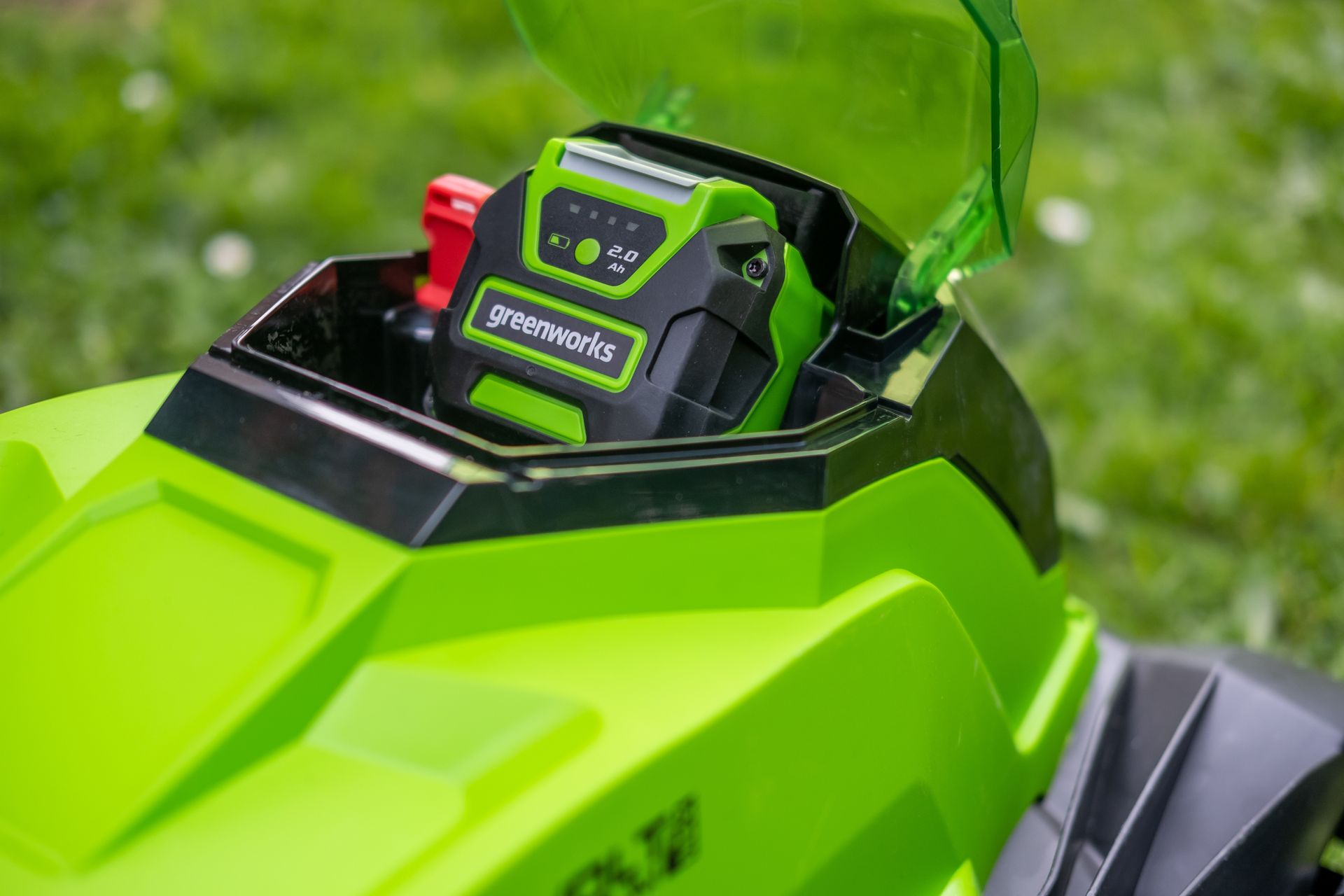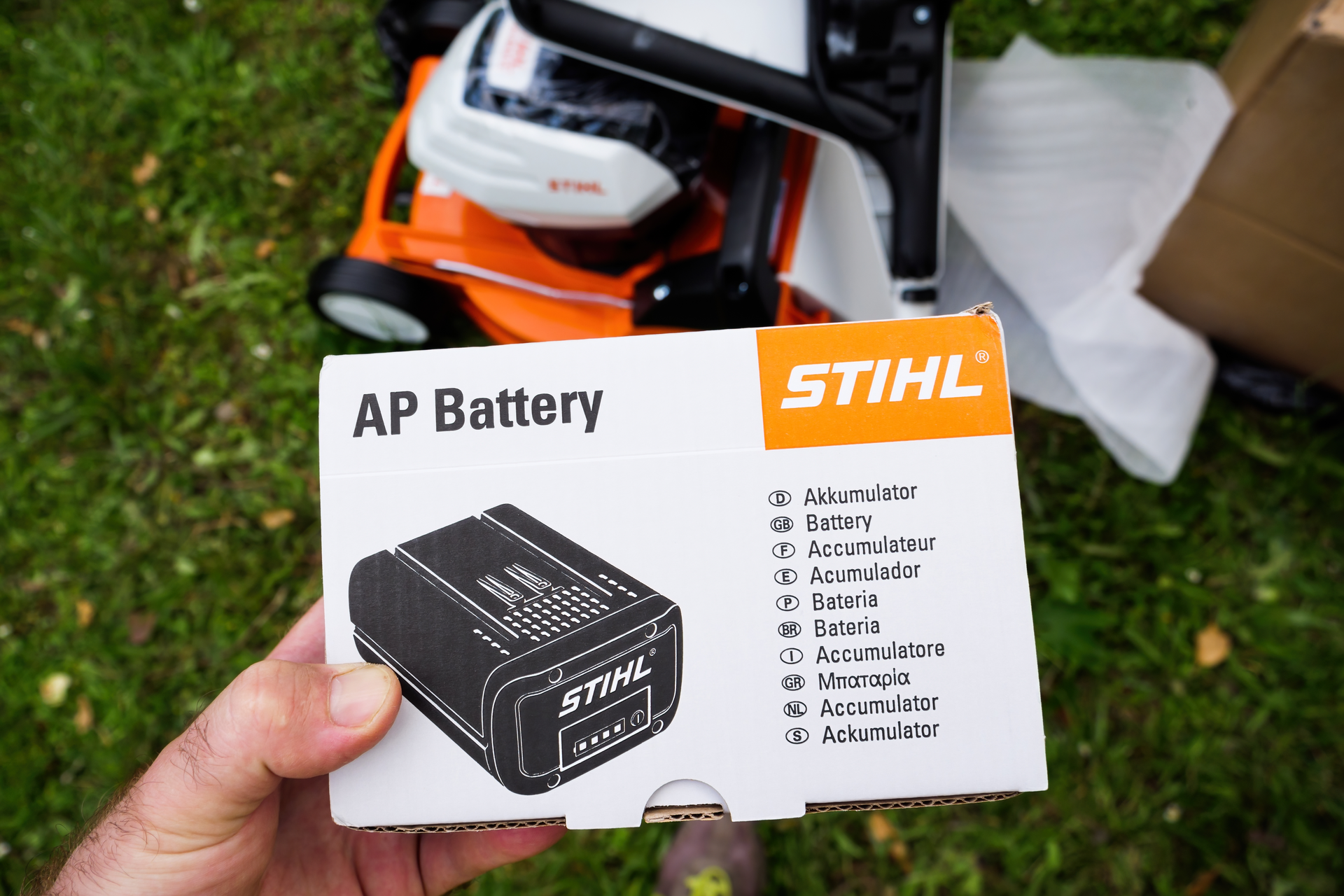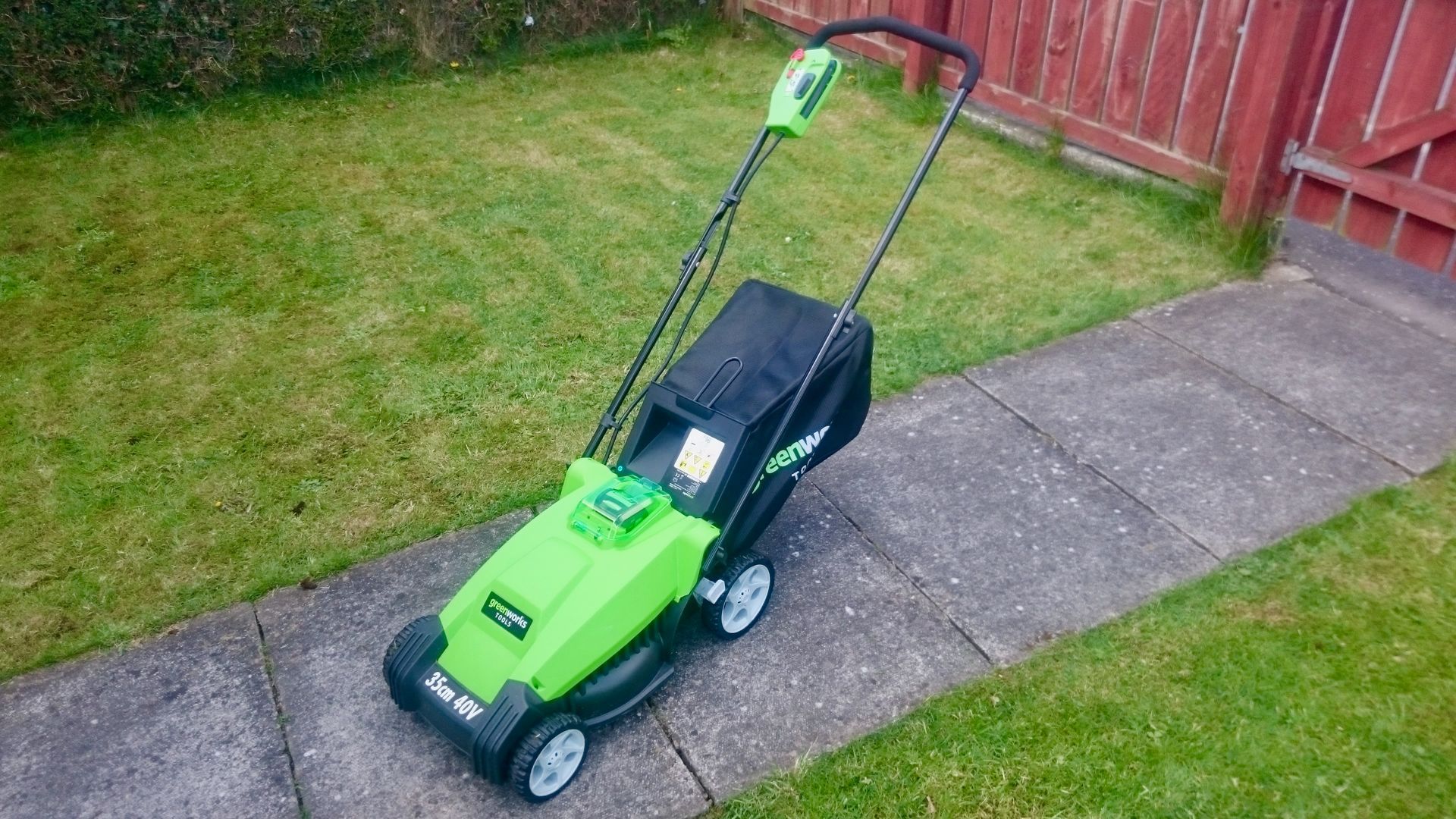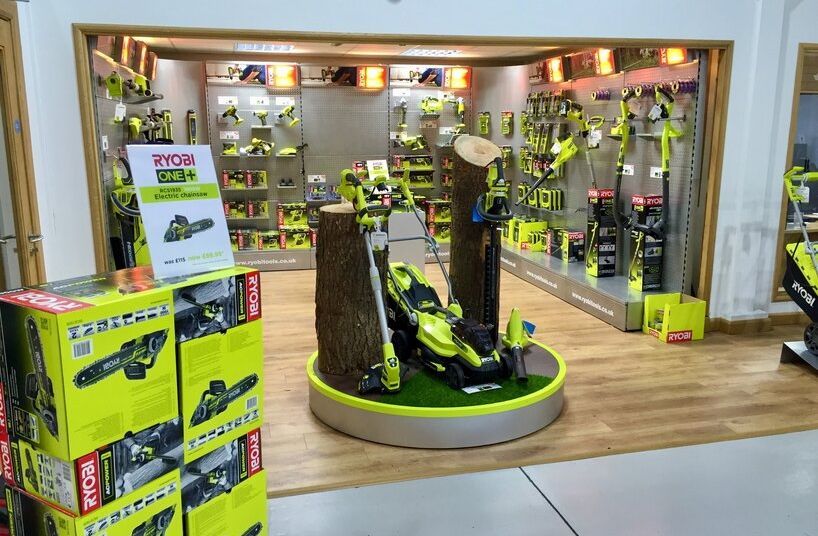*Important Information: As an audience supported website, if you purchase an item after clicking an external link or advertisement marked with an asterisk (*) on this website, we may receive a commission. This does not change the price you pay.
Sales of cordless lawnmowers and garden machinery have surged over the past decade. Image Credit: Hadrian
Cordless Electric Mowers
In an industry with roots stretching back nearly two centuries, cordless, battery-powered lawnmowers are undeniably the new kids on the block.
Functionally, they operate on the same core principles as corded electric machines — with one key distinction: the power cord has been replaced by a rechargeable battery, to deliver greater convenience.
Sales of cordless lawnmowers and garden machinery have surged over the past decade. Image Credit: Hadrian
Today, a wide range of cordless mowers is available, including wheeled rotary mowers, cylinder mowers, roller mowers and of course, hover mowers. Once viewed merely as a convenient alternative to corded electric models, cordless machines have rapidly evolved to rival — and increasingly replace — petrol powered machinery.
While corded electric and petrol mowers are unlikely to disappear anytime soon, momentum within the industry is shifting. As battery technology develops, it is expected that sales of cordless mowers will ultimately supplant sales of most electric and petrol machines. In just a few years, cordless mowers have gone from being an interesting niche, to become the beating heart of the UK’s garden machinery market.
Lithium Ion (Li-Ion) Technology
The advent of lithium-ion (Li-Ion) technology has revolutionised the power tool and garden machinery sector. Compared to the previous generation of Nickel-Cadmium (Ni-Cad) batteries, li-ion offers a range of compelling advantages — for users and manufacturers alike.
- Energy density: Lithium-ion cells can store significantly more energy per unit volume than Ni-Cad cells, enabling more compact, lightweight battery packs, without compromising runtime or performance;
- Battery behaviour: Ni-Cad batteries cans suffer from what is known as the ‘memory effect’. Technically known as voltage depression, this arises when partial discharges during charging cycles degrade the cell’s effective capacity over time. Li-ion batteries are immune to this phenomenon, delivering consistent performance, regardless of charge history;
- Operating life: Lithium-ion battery packs typically offer an operational lifespan up to three times longer than their Ni-Cad counterparts, translating to lower long-term costs, and reduced maintenance.
In short, lithium-ion batteries are lighter, more energy-dense, longer-lasting, and free from the drawbacks that characterise older technologies.
Battery Considerations
Since the battery is the powerhouse of any cordless machine, it’s essential to ensure any battery powered mower delivers enough performance to meet the demands of your garden. And by performance, we mean both power output and runtime between charges. When evaluating a cordless mower, two key specifications should be borne in mind:
- Voltage (V) represents electric potential or electromotive force — a higher voltage generally translates to greater torque and cutting power. So, a 36V mower will outperform an 18V machine;
- Ampere-hours (Ah) denote the amount of charge the battery can deliver over time — effectively, how long the mower will run before it needs recharging. So, a 4.0Ah battery will outlast a 2.0Ah battery on a single charge.
Small numerical differences are rarely significant. The real-world performance gap say between a 20V and an 18V machine, or between a 3.8Ah and 4.0Ah battery, is minimal and unlikely to be noticed during use.
So, what’s the ideal voltage and battery capacity for your needs?
Unfortunately, there’s no universal answer. The optimal combination depends on factors such as lawn size, terrain, grass type, and how often you mow. Understanding your specific use case is key to choosing a cordless system that balances power, runtime, and practicality. However, with the exception of the very smallest of lawns, we'd recommend a minimum of an 18V machine, coupled with a 2.0Ah battery, increasing to a minimum of 36V and an absolute minimum of 4.0Ah for small to medium size gardens.
A major advantage of modern lithium-ion battery systems is cross-compatibility. Many manufacturers now design their batteries to power an entire ecosystem of tools. Take Ryobi as an example. A single Ryobi One+ 18V battery, can power over 200 different tools, from lawnmowers to impact wrenches, routers to power scrubbers. Given that high-performance li-ion batteries represent a significant portion of total tool cost, it’s well worth considering what other equipment in a manufacturer's range, a single battery can support before purchase.
For added versatility, some systems allow battery pairing. For example, some brands allow you to run two 18V batteries in parallel to deliver 36V of total power — effectively doubling the output for high-demand applications, without investing in a separate, higher-voltage battery.
Of course, no battery system is complete without a charger — and not all chargers are created equal. Charging times can vary dramatically. While some standard chargers may take over two hours to fully recharge a battery, fast chargers can reduce this significantly. Always check the charging specifications before you buy — or consider investing in a second battery to keep downtime to a minimum. Look out for rapid charge features as well. Some chargers offer a partial or "boost" charge mode, allowing a battery to reach around 75–80% capacity in a fraction of the full charge time. This is especially handy when you're mid-job and need just a little more runtime: pop the battery on charge, grab a cuppa, and by the time you’re back, you may have just enough juice to finish the task — or at least that’s the theory.
Finally, it’s crucial to double-check what’s included with your cordless mower. Some models come complete with battery and charger, while others are sold as 'bare tools'. Since a battery can sometimes cost more than the mower itself, it's worth confirming what you’re getting, before parting with your hard earned.
Brushed v Brushless Motors
Beyond the rise of lithium-ion battery technology, one of the most significant advancements in cordless power equipment, has been the adoption of brushless motor technology - especially within the professional sector.
Brushed motors, which date back to the 19th. century, rely on internal metallic brushes to transfer electrical current to the spinning rotor. While this design is simple and cost-effective, it comes with a downside: the brushes will wear, and will eventually require replacement. In contrast, brushless motors, which first began to see commercial use in the 1960s, eliminate the need for brushes entirely. Instead, they use electronic circuitry to control the motor’s rotation, which means fewer moving parts, less friction, and reduced wear. The result is a motor that typically offers higher efficiency, lower maintenance demands, and improved long-term durability — especially in machinery that sees frequent or demanding use.
While it's theoretically possible to replace worn brushes in a traditional brushed motor, doing so is often uneconomical for entry-level or mid-range equipment. For instance, on a £150 electric lawnmower, the cost of parts and labour to replace the motor brushes may exceed the value of the machine itself — making replacement a more economically sensible proposition than repair.
Of course, these advantages don’t come without a cost. Despite falling prices, brushless motors are still more complex and expensive to manufacture than their brushed counterparts. As a result, machines equipped with brushless technology usually carry a price premium. However, for many users, the benefits — longer lifespan, quieter operation, higher torque, and greater energy efficiency — are well worth the investment.
Lithium-ion battery electric lawnmowers have come a long, long way, since this Greenworks' 35cm 40-volt model, first appeared back in 2015. Image Credit: Author
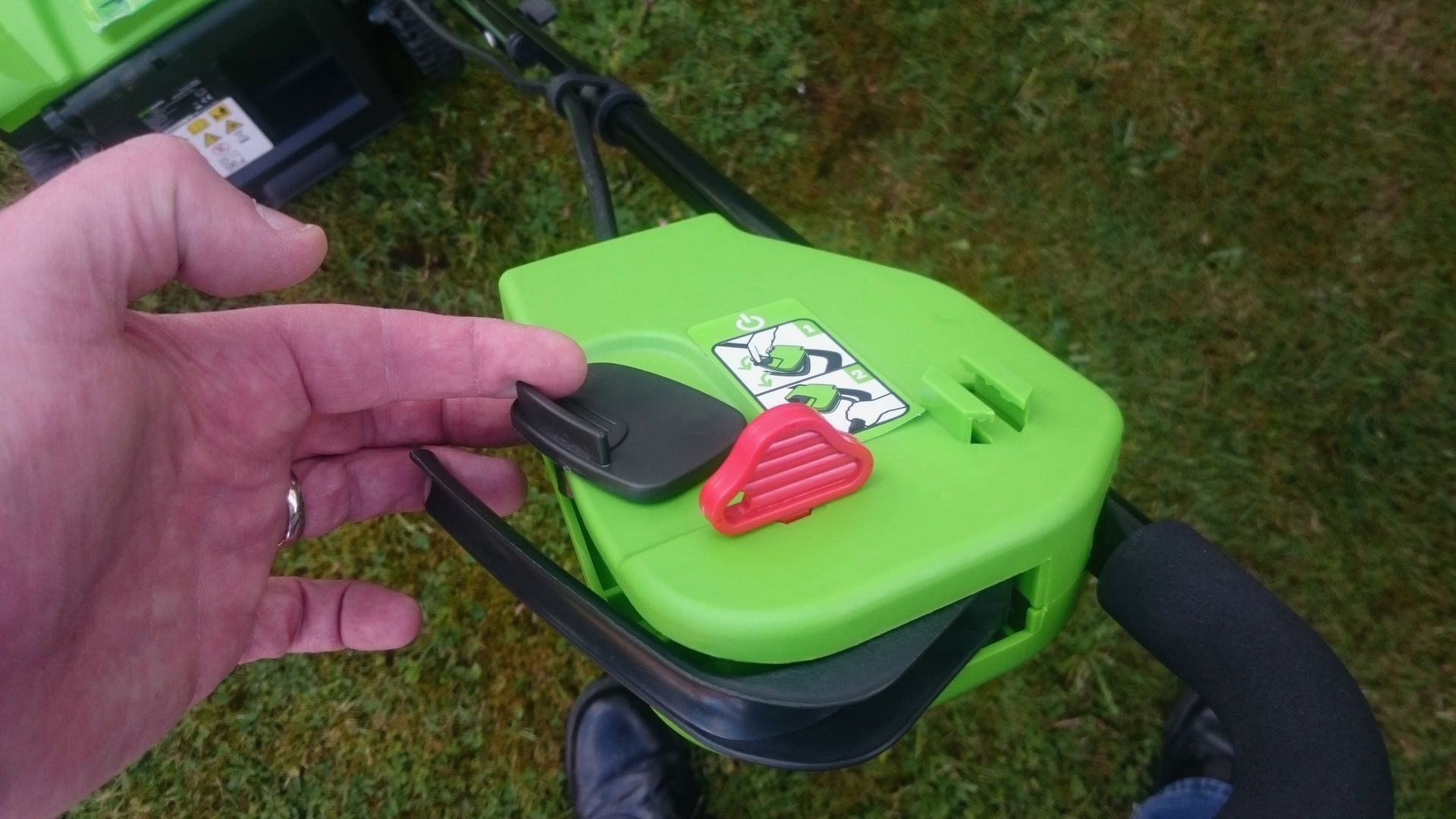
If you're used to pulling a cord to start a mower, you'll love the simplicity of a cordless mower. Simply pull a handle and press a button or insert a key. It really is that simple. Image Credit: Author
Advantages of Battery Mowers
As with any lawn mower technology, battery-powered mowers come with their own set of pros and cons. That said, the advantages are increasingly compelling — particularly for domestic users seeking convenience, low maintenance, and reduced environmental impact. Here are some of the key benefits:
- Cleaner, safer, more comfortable operation: Unlike petrol mowers, cordless models require no fuel, meaning no fumes, no fire risk, no oil changes, and no storage headaches related to flammable liquids. They also produce fewer vibrations than a petrol mower and often generate significantly less noise too, making them better suited for early-morning or urban use;
- Effortless starting: Gone are the days of pull cords, priming, and manual chokes. With a cordless mower, it’s simply a matter of inserting the battery, pressing the safety handle (operator presence control), and hitting the power switch. Welcome to instant startup — with no fuss and less frustration;
- Reduced maintenance: Cordless battery mowers require much less maintenance than petrol models. Aside from occasional blade sharpening and eventual battery replacement, consumer grade cordless units require very little servicing. No spark plugs, no air filters, and no oil changes to worry about;
- Freedom to move: Thanks to the absence of a heavy petrol engine, battery mowers are generally lighter and more agile. Many li-ion machines feature decks made from durable plastics, as opposed to steel or aluminium — reducing weight and enhancing their ease of use, especially in smaller spaces and on irregularly shaped lawns;
- Reduced running costs: Cordless mowers are also cheaper to run. Between reduced maintenance and the absence of fuel costs, homeowners can expect to save around £70 per year compared to a typical petrol mower. Over time, those savings add up;
- No cables, no hassles: Compared to corded electric mowers, battery-powered machines offer unrestricted movement — with no power cable or extension lead to avoid, untangle, or accidentally cut. This not only improves operator safety but also makes the mowing experience smoother and more efficient;
- Cross system compatibility: For added value, many manufacturers design their batteries to work across a full range of garden and DIY power tools — from trimmers and blowers, to chainsaws and masonry drills — delivering maximum flexibility from a single power source.
So, while cordless mowers may not quite yet suit every application — they do offer a highly practical and efficient solution for the vast majority of domestic users.
Disadvantages of Battery Mowers
Just like corded electric, manual, and petrol-powered mowers, cordless battery-powered machines come with their own set of trade-offs. While the technology has advanced rapidly in recent years, there are still a few important considerations to keep in mind:
- Slightly Lower Power Output (For Now): Although modern cordless mowers feature more powerful motors than ever before, they typically still lag a little behind petrol models in terms of raw cutting power — especially at similar price points. The performance gap has narrowed significantly, and continues to close as battery and motor technologies evolve, but for particularly dense grass, very large lawns, or rough terrain, petrol mowers likely still have the upper hand;
- Higher Initial Purchase Price: Cordless mowers generally come with a higher upfront cost than petrol or corded electric equivalents. While prices have fallen sharply, and are approaching parity with petrol models, it’s hard to beat the low cost of a basic plug and cable setup. Lithium-ion batteries, high-efficiency motors, and smart chargers all contribute to that initial price premium. On the flip side, ongoing costs for cordless mowers — such as servicing, fuel, and maintenance — are typically much lower than for petrol machines. For many users, the initial investment can be recouped within the first few years of ownership, when factoring in savings on fuel and servicing;
- Runtime Limitations: A cordless mower’s greatest strength — its battery — can sometimes prove its biggest weakness. Unlike a petrol mower that’s ready to go as long as there’s fuel in the tank, or a corded mower that operates just so long as it’s plugged in, a cordless machine requires a battery, which must be charged in advance of use. Charging times can range from 30 minutes to over an hour, depending on the charger and battery capacity. Without a spare battery on hand, you may find yourself stopping mid-cut for a recharge;
- Replacement Battery Costs: Lithium-ion batteries are not cheap, and while they can last for many years, they will eventually degrade. Worse still, battery warranties often have shorter coverage periods than the mower itself. In some cases, the replacement cost of a battery can exceed that of a small petrol engine, which is worth considering if you're buying into a cordless system for the long haul.
So, while cordless mowers offer a cleaner, quieter, and more convenient alternative to petrol and corded models, they’re not without their limitations. Understanding the
trade-offs, is essential to making an informed buying decision, especially if you're upgrading from a petrol machine.
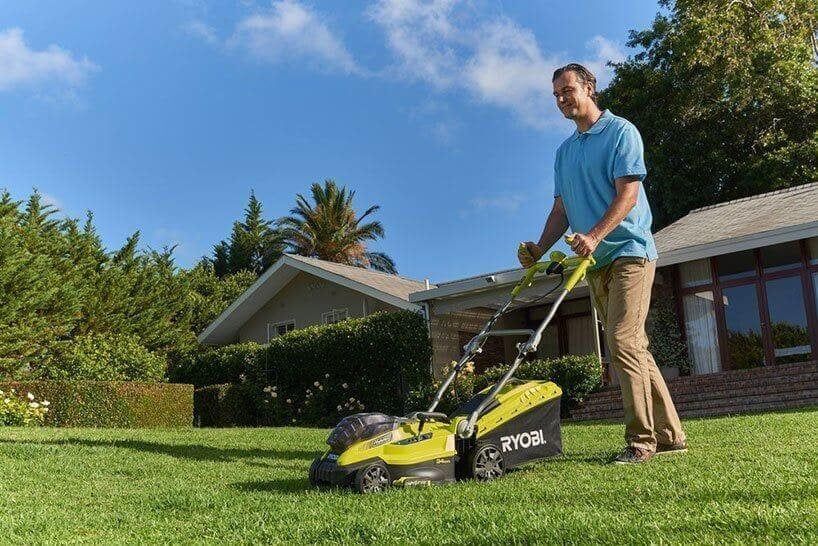
Announced in January 2015, this Ryobi Fusion mower, has a 34cm cutting path, and cleverly combines the freedom of 36v cordless li-ion power, with the assurance of supply that only mains power can provide.
Image Credit:
Ryobi
/
Techtronic Industries UK Limited
Hybrid Mowers
A derivative of the battery mower is the hybrid mower. Unlike their automotive namesakes, which usually combine an electric motor with a petrol engine, hybrid mowers combine a battery powered electric motor, with corded, 230V AC electric power. It’s a clever attempt to overcome the perceived disadvantages of cordless power, by supplementing it with mains electricity.
The hybrid approach allows gardeners who may suffer ‘range anxiety’ with the reassurance that should the battery run out of charge; mains electric power is available as a back-up.
The only real downside is cost. A quality cordless mower costs more than an electric equivalent. Combining the 2 technologies, results in a product which is more expensive still. It may cost less to simply purchase a cordless mower with a spare battery, than to pay the premium for a hybrid mower.
Summary
Sales of cordless mowers have come a long way in only a short time. Despite being a relatively new technology, sales of cordless mowers are growing quickly. Multiple manufacturers have already discontinued the development of petrol mowers in favour of lithium-ion powered, battery models.
Today, they are a practical and viable alternative to both corded electric and petrol-powered machines. Many cordless models deliver petrol like performance, without the fumes, expense, hassle, cost, pollution and noise. Unlike corded, electric mowers – there’s no cable to cut, or trip over. And with battery chemistry and technology improving all the time, range anxiety is much less of an issue today, than previously.
The main drawback with a cordless mower, is the initial purchase cost. However, with prices having fallen considerably in the space of just a few years, battery powered, cordless machines are now very much within the reach of many British homeowners and householders.

